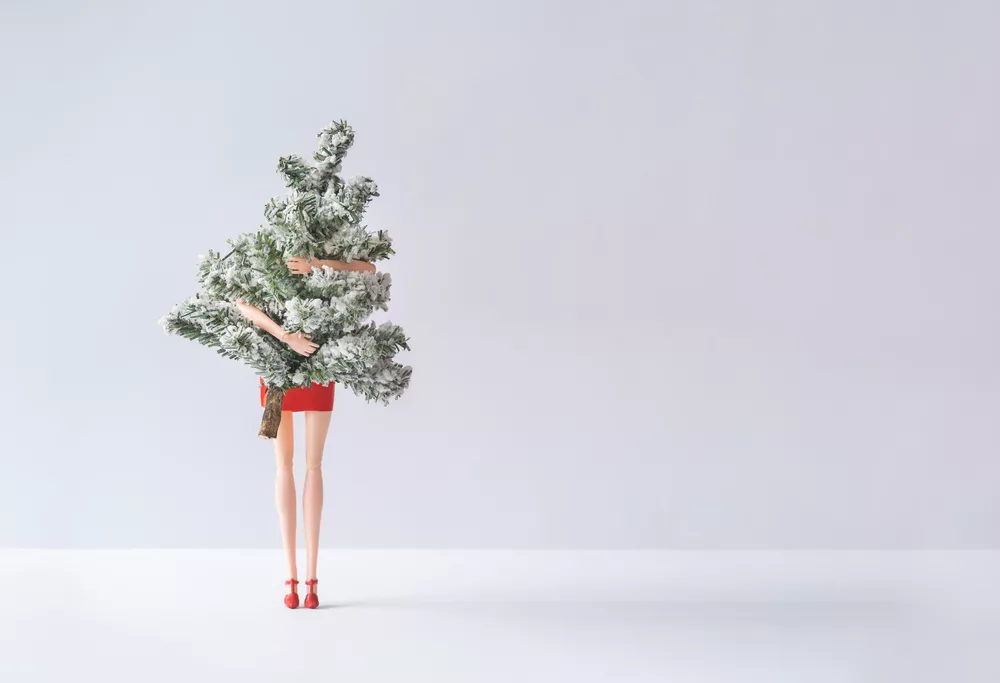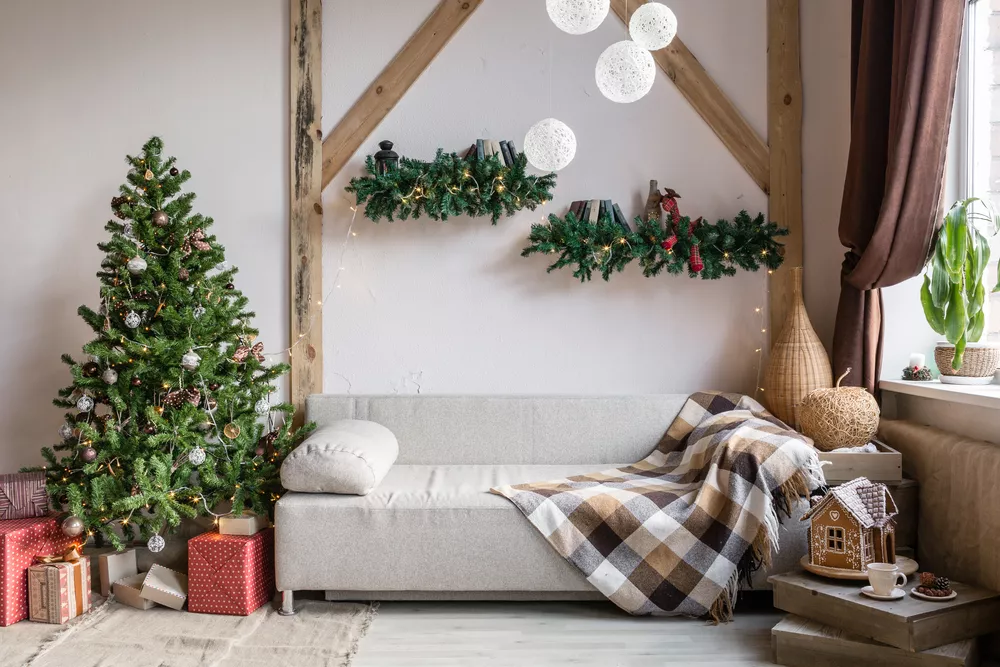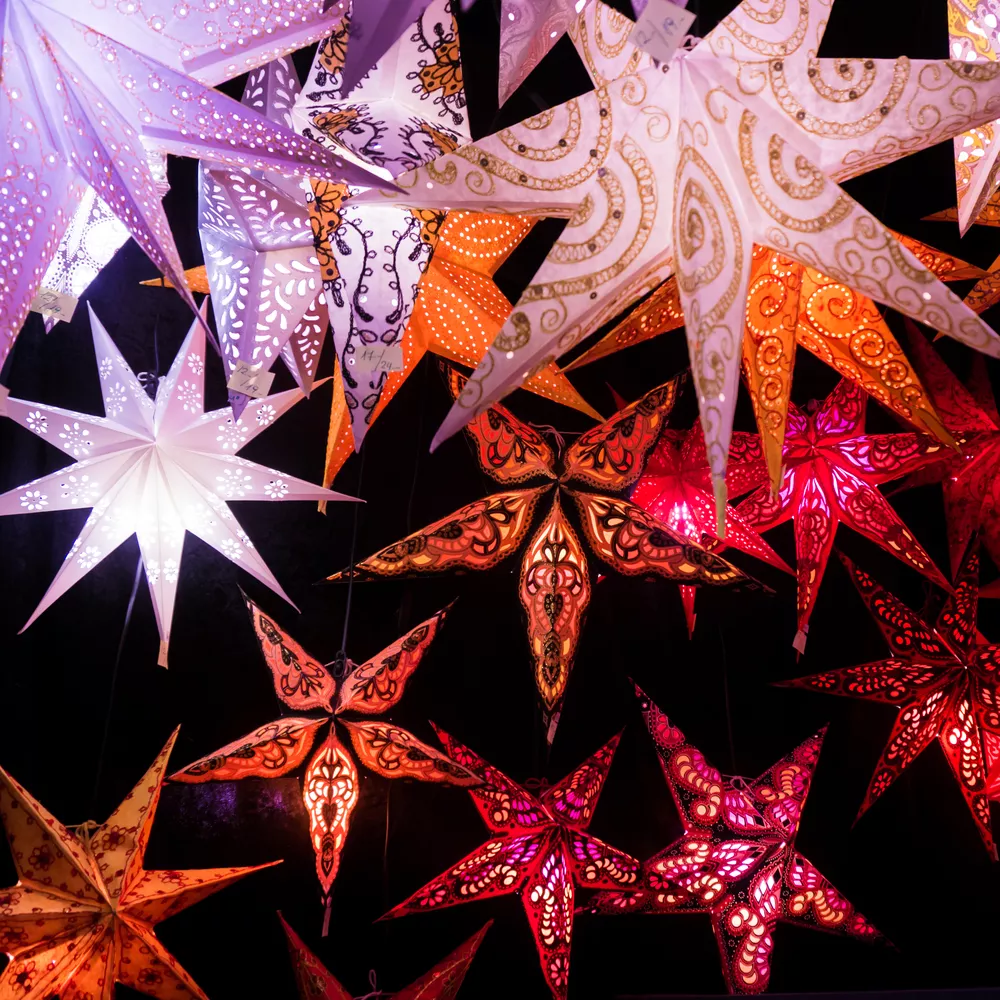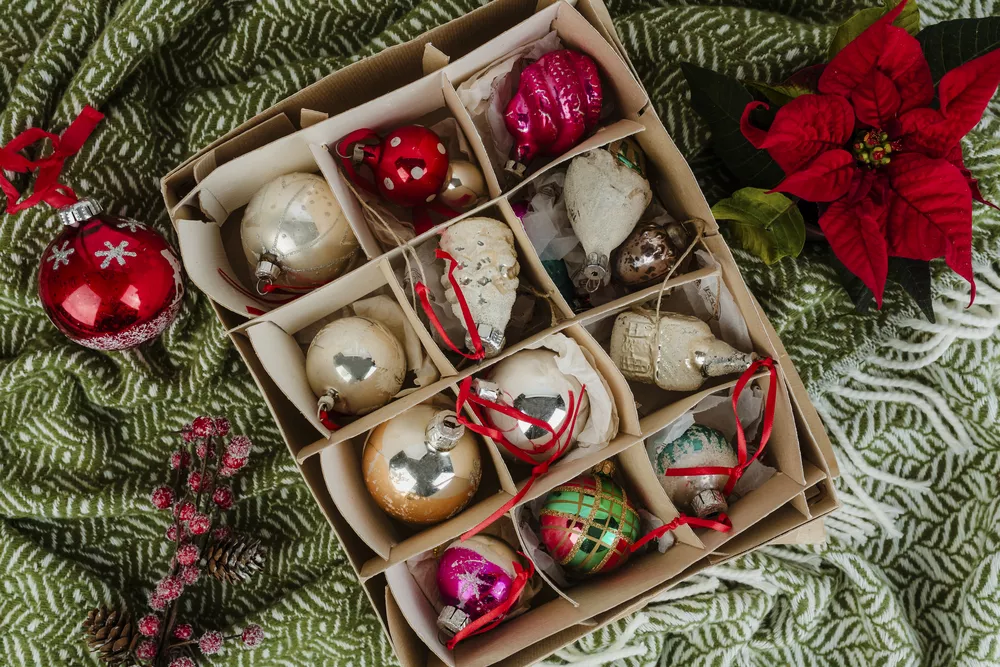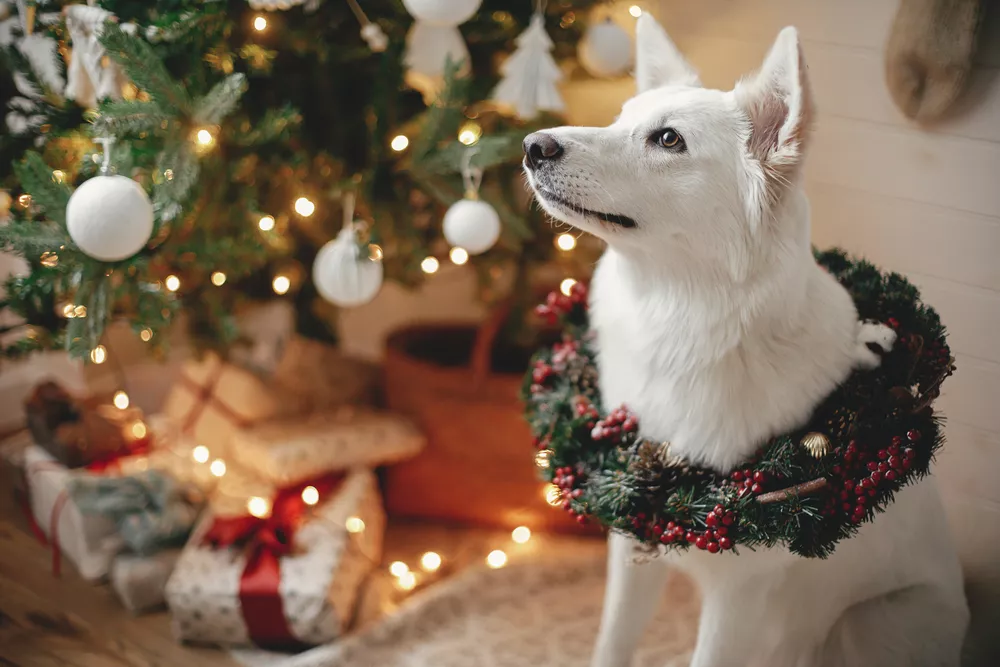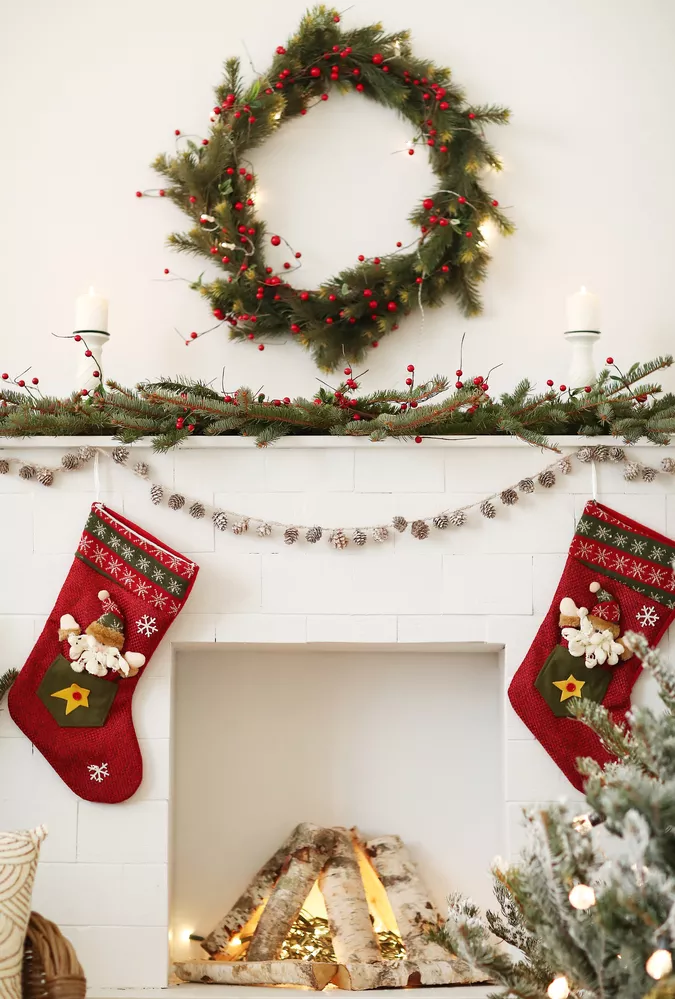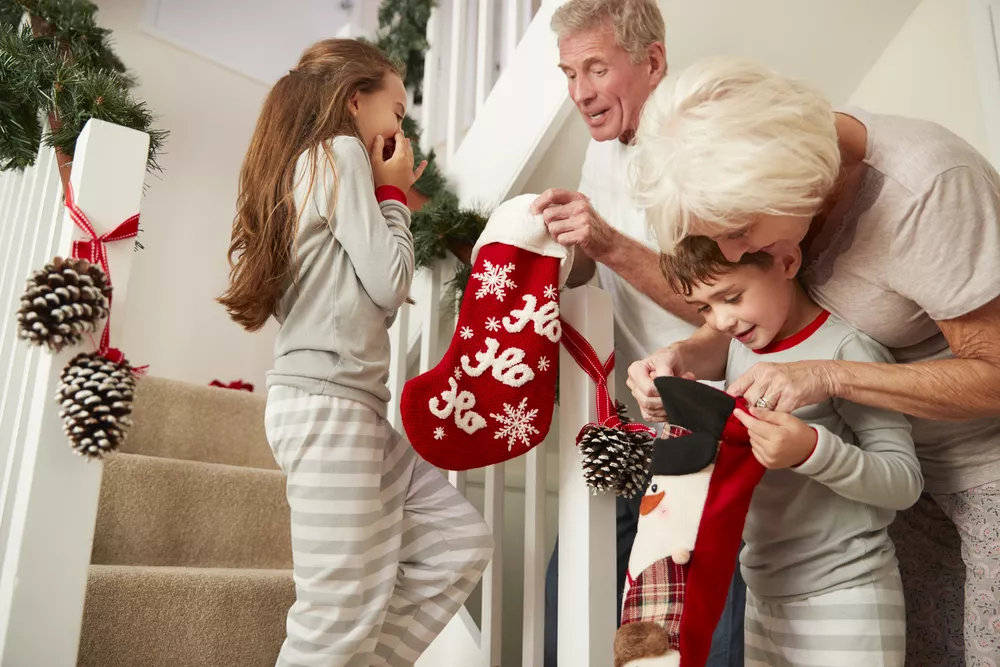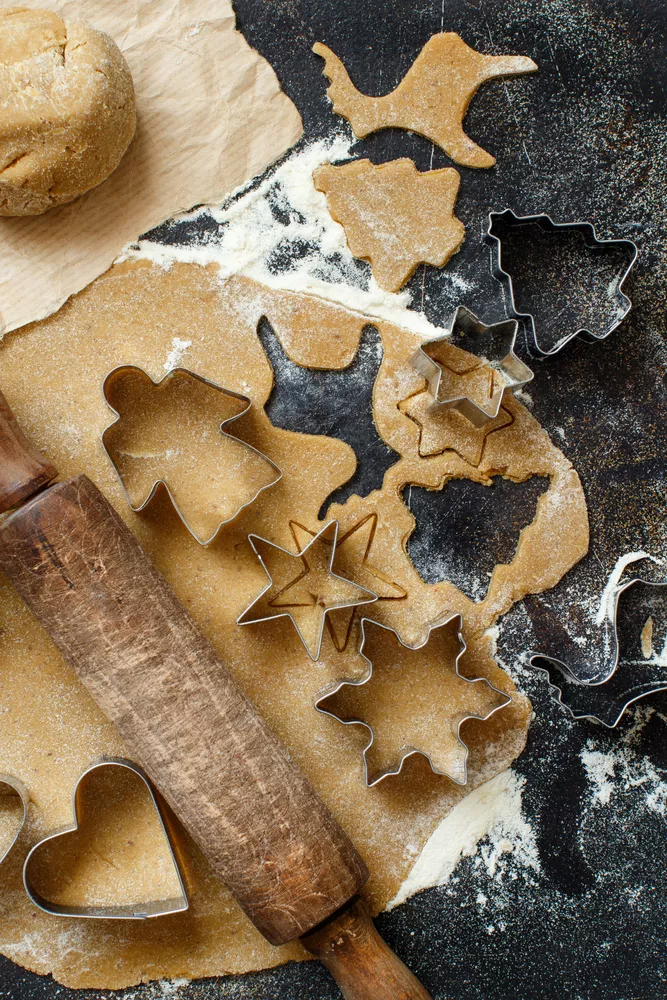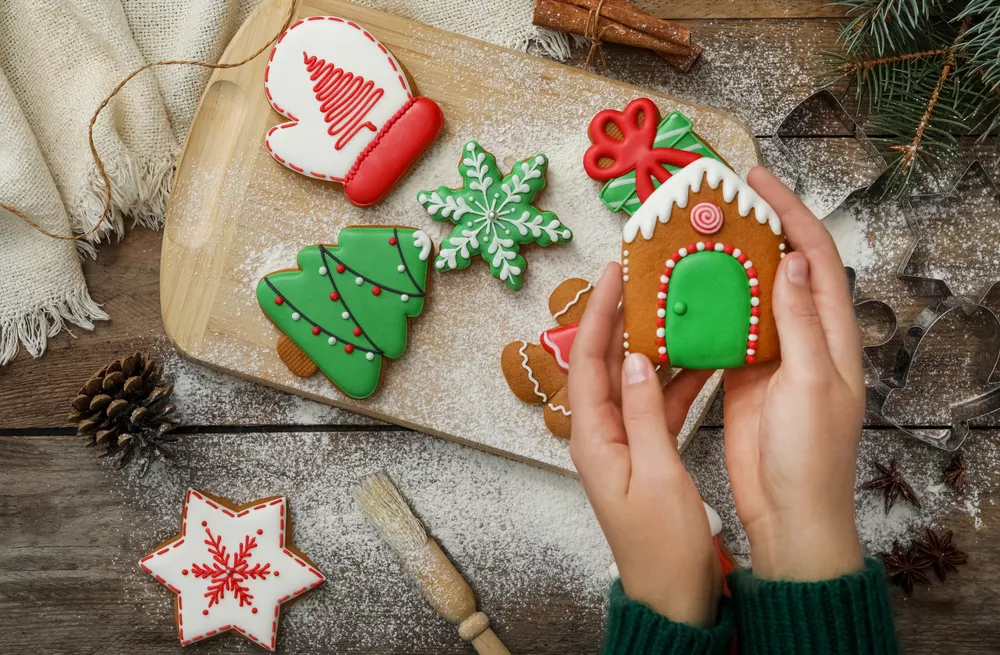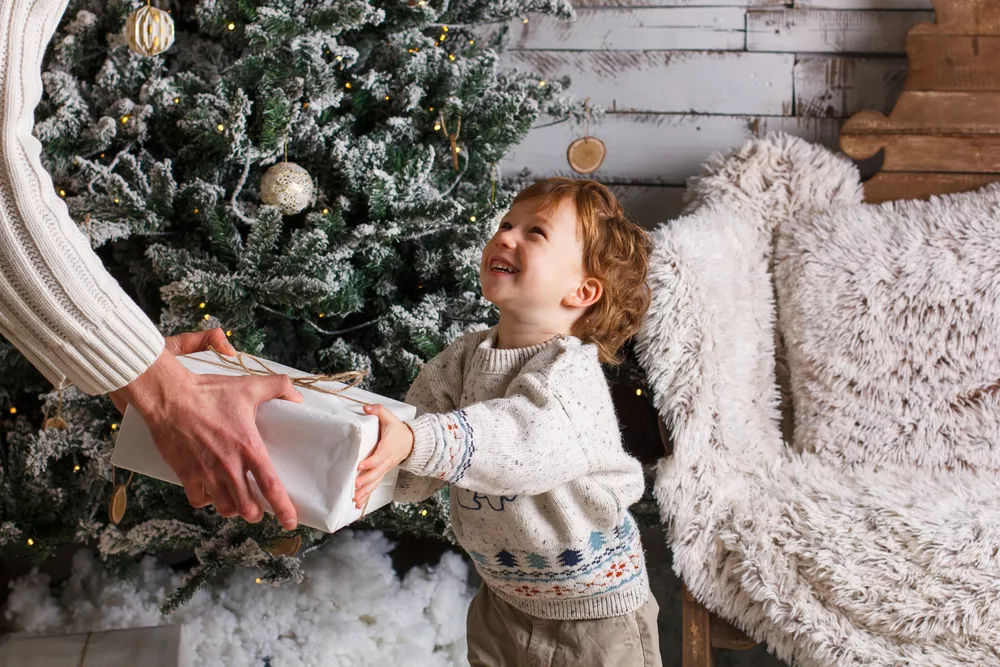12 Most Popular Symbols of Christmas and Their Meanings
From the Christmas tree to Santa Claus, the symbols of Christmas are powerful cultural codes that evoke an instant emotional response. They can help you engage your audience, build a strong connection with them, and create that special holiday atmosphere in your communications.
To help you with this, we have compiled a list of the most popular Christmas symbols. Discover their stories and meanings, and explore themed collections of trending images that will help you create uplifting campaigns for the upcoming holidays.
What are the 12 symbols of Christmas?
- Christmas tree
- The star
- Christmas ornaments
- Lights and candles
- Wreaths
- Santa Claus
- Stockings
- Bells
- Mistletoe, holly, poinsettia
- Christmas sweets
- Gifts
- Angels and nativity scene
1. Christmas tree
One of the main symbols of the holiday season is, of course, the festive Christmas tree. For many people, decorating a Christmas tree is an important tradition, and its ornaments are often passed down from generation to generation and become true family heirlooms. But where did the custom of decorating a fir tree for the holidays come from?
This tradition originated in medieval Germany and is associated with the name of St. Boniface. Legend has it that he chopped down a sacred oak tree where pagans offered sacrifices to the god Thor. The cut-down tree destroyed everything around it, except for a small fir tree. Boniface called it a real miracle that helped convert people to Christianity, and the fir tree was proclaimed the holy tree of Christ and a symbol of eternal life. Since then, the custom of decorating a Christmas tree has spread around the world and the festive fir tree has become an indispensable attribute of the celebration.
Browse collection
2. The star
The star is associated with a biblical story, according to which the three kings, or Magi, learned about the birth of Jesus Christ by the appearance of a star in the sky. It guided them from the East and stopped near Bethlehem, so this symbol is also called the Star of Bethlehem. In the Christian tradition, it usually has eight points that symbolize eternal life. The star is a popular decoration during the holiday season and can be seen in street decorations, as well as in festive home decor. Traditionally, it serves as a Christmas tree-topper. There are also some other varieties of this symbol including the Froebel star, popular in Germany, and the Moravian star, common in Western countries.
Choose files3. Christmas ornaments
Before, to decorate a Christmas tree, people used various fruits, nuts, and even eggs. Later, paper figurines, paper flowers, sweets, and candles were added to the mix. Glass baubles appeared in Saxony during the 16th century due to a poor apple harvest. The British Queen Victoria contributed to the popularization of these decorations. After the newspapers published a photo of the royal Christmas tree decorated with glass ornaments in the 1840s, their popularity grew tremendously and spread far beyond Europe. Today, during the festive season, you can see a decorated Christmas tree anywhere in the world, and nothing better conveys the spirit of holiday.
Discover collection4. Lights and candles
Among things that represent Christmas сandles are another embodiment of the Star of Bethlehem. In many countries, the winter holidays fall during a cold and dark season. Before the advent of electricity, it was candles that gave people light and warmth. They were also used to decorate Christmas trees. In addition to purely practical purposes, candles also had a metaphorical meaning and symbolized the hope and victory of light over darkness. According to legend, this tradition was originated by 16th-century theologian Martin Luther. Fascinated by the beauty of the stars in the night sky, he was the first to decorate a Christmas tree with candles. Electric garlands, which replaced candles, only appeared in the late 19th century. Today, it is impossible to imagine the holiday season without these twinkling lights that create a festive and fairy-tale atmosphere.
Explore collection5. Wreaths
Many ancient civilizations had traditions of wreath-making. Throughout history, wreaths have always symbolized life and infinity. The Christian custom of decorating homes with wreaths is associated with the name of a 19th-century Hamburg theologian, Johann Wichern, who ran an orphanage. His protégés constantly asked him when Christmas would be. So that the children could count down the days until the holiday, Wichern made an Advent wreath out of an old wheel and fastened 24 small red candles and 4 large white candles to it. The pastor lit one small candle on the wreath each weekday and Saturday, and one large candle each Sunday. Due to its cyclical shape, the wreath symbolizes the boundless love of God, and the evergreen branches embody the hope of eternal life given by Jesus Christ.
Choose files6. Santa Claus
Santa Claus is a central character in Christmas mythology. Popular culture represents Santa as a good-natured old man with a white beard, red coat, and a long hat with a white brim. He lives at the North Pole and travels on a sled pulled by flying reindeer. Santa’s helpers, the Christmas elves, make the toys that Santa gives to well-behaved children on Christmas Eve. The image of Santa Claus combines features of St. Nicholas, the English Father Christmas, and the Dutch Sinterklaas. Interestingly, it is advertising that has largely contributed to Santa Claus’s popularization. In fact, it was Coca-Cola that shaped the modern idea of Santa as we know him; the company has been using this character in its holiday campaigns since 1931.
Browse collection7. Stockings
Stockings for gifts are one of the most popular Christmas symbols. But where did this tradition come from? According to one of the most common theories, it is also associated with St. Nicholas. Legend says that a poor widower had three daughters and did not have the means to give them a dowry. After having found out about the family’s predicament, St. Nicholas decided to help. Knowing that the man would refuse to accept a charitable donation, Nicholas went down the chimney at night and stuffed the girls’ washed stockings that were drying by the fire with gold. Since then, the custom of hanging Christmas stockings for gifts has spread worldwide. Besides, the legend that these are the gifts from St. Nicholas himself lives on even today.
Explore collection8. Bells
Many modern traditions have ancient pagan roots. For example, in pre-Christian times, it was customary to ring bells during winter celebrations to ward off evil spirits. In the context of Christmas, bells acquired a new, more peaceful meaning and are associated with heralding the good news of the birth of Jesus. They are closely connected with churches, where bells can be heard every Sunday and during religious holidays, the main one being Christmas. No wonder bells are one of the most popular festive symbols.
Choose files9. Mistletoe, holly, poinsettia
In addition to fir trees and conifers, there are other evergreen, semi-evergreen, or seasonal plants associated with the holiday season and used in festive floral displays. The most common are mistletoe, holly, and poinsettia. Each of them has its own history of becoming a popular Christmas symbol. An interesting fact about mistletoe: it was used to decorate homes for the winter holidays before the spread of fir trees. And although mistletoe gave way to the Christmas tree, it remains a part of holiday traditions, such as the custom of kissing under the mistletoe.
Another festive decoration since ancient times is holly with its bright berries ripening in the fall and lasting throughout the winter. In the Christian tradition, these berries symbolize the blood shed by Christ, and the thorny leaves symbolize a crown of thorns. Another plant that blooms in winter is the poinsettia. This is also called the Christmas star for its distinctive leaf shape. Its decorative appearance and bright color make poinsettia one of the main decorations for the festive season.
Browse collection10. Christmas sweets
Treats are an integral part of all holidays, and Christmas is no exception. There are lots of sweet treats traditionally enjoyed during this period, but the most popular ones are candy canes, gingerbread, and cookies. Candy canes with white and red stripes and a mint flavor are often used to decorate Christmas trees. Gingerbread has a long history; back in the 17th century, it was made in the form of religious symbols, and baking gingerbread was considered a sacred process. Nowadays, gingerbread has many variations and shapes, but is still associated with Christmas.
Choose files11. Gifts
Both children and adults alike look forward to Christmas because it’s an exciting time to exchange gifts. This tradition allows us to show how important our loved ones are to us and share warm moments with them. No wonder that for many, the search for gifts starts long before the holiday and is taken very seriously. No less attention is given to decorating gifts. By the way, gift packaging elements can have their hidden meanings. For example, ribbons used to tie packages symbolize unity and a sense of kinship between people.
Discover collection12. Angels and nativity scene
Angels are traditional symbols of Christmas because they play an important role in the biblical Nativity story. The angels visited Mary and Joseph to tell them about the coming birth of Jesus. They also appeared in the sky above Bethlehem to herald the coming of the Savior. The display of the nativity scene is called Christmas crib. Its essential elements are the figurines of Jesus Christ, Mary, and Joseph. They can also be complemented by shepherds, wise men, cattle, and other characters. Setting up a nativity scene is one of the most popular traditions in Europe and North America, which allows you to share the joy of a great holiday.
Choose files
To wrap up
It is hard to imagine another holiday that has such powerful mythology as Christmas. It has absorbed the traditions of different nations and eras. This means that first of all, despite its religious connection, Christmas is about bringing people together regardless of their differences and customs. Having undergone so many transformations and stood the test of time, popular Christmas symbols embody goodwill and the desire to live in harmony. That’s why they find a sincere response. Fill your holiday communication with warm and atmospheric content from our collections to share special moments of the season with your audience.
FAQ
Why are candy canes symbols of Christmas?
The story of how candy canes became a traditional holiday treat is quite interesting. These sweets first appeared in Cologne in the late 17th century. Legend states that a choirmaster of Cologne Cathedral was looking for a way to keep children quiet during the long Christmas service. He came up with the idea of handing out candies to children. The choirmaster asked a local candy maker to make caramel sticks in the shape of a walking cane to be associated with the shepherds who had come to see the Divine Baby. From Germany, the candy canes spread to other parts of Europe, where they were handed out during nativity plays reenacting the scene of Christ’s birth. This is how candy canes became associated with Christmas.
What flowers are symbols of Christmas?
The most popular plants traditionally used to decorate homes during the holiday season are mistletoe, holly, and poinsettia. They fit perfectly into the classic festive palette due to their bright green color with red elements. A Christmas symbol of a new beginning and good luck, ivy is also used in holiday decor, in particular in wreaths. Cyclamen is among the flowers that bloom in winter. That’s why they can often be seen in festive table arrangements. Another flower with a red and green color scheme is anthurium.
Why are green and red colors symbols of Christmas?
Green and red colors have accompanied winter holidays since ancient times. Even the Celts used to decorate their homes with holly to celebrate the winter solstice. People believed that this evergreen plant with bright berries brought good luck and prosperity to their homes. In the biblical tradition, green symbolizes eternal life and red symbolizes the blood of Jesus. In popular culture, these colors have become established as the holiday colors thanks to the above-mentioned Coca-Cola advertisement, where Santa’s red suit was combined with green elements, including a Christmas tree.
What Christmas symbols have Christian origins?
Most popular Christmas symbols are directly related to the Christian tradition. These include the star, Santa Claus (as an incarnation of St. Nicholas), angels and the nativity scene, as well as many others. But even symbols with a longer history and pre-Christian origin have been reinterpreted and harmoniously integrated into Christmas mythology. These include bells, wreaths, mistletoe, and holly.
Other articles you might find interesting:
Captivating History of Traditional Christmas Colors
Winter Marketing Calendar: The Most Exciting Seasonal Holidays and Content Collections
The Best 2022 Christmas Ads to Get Into the Holiday Spirit


